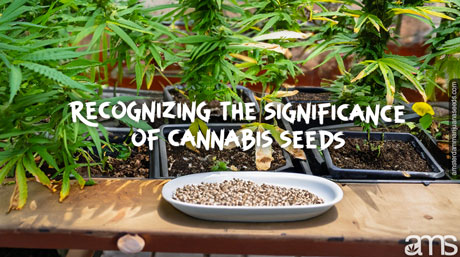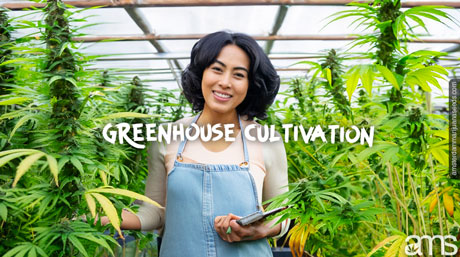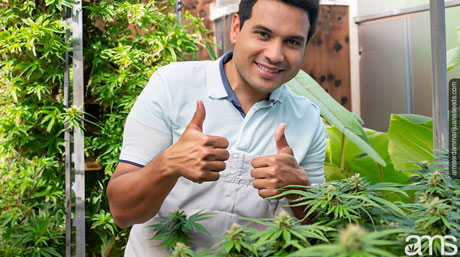In this article, you will find answers to the following questions: what are the benefits of using a greenhouse? How does greenhouse cultivation differ from other growing methods? What are the advantages of growing marijuana in a controlled environment? How is climate control beneficial for cannabis cultivation? What are the best practices for pest management in a greenhouse? How does light intensity affect cannabis growth in a greenhouse? what methods can be used for temperature regulation in a greenhouse? What are the key considerations for humidity control in a greenhouse?

Introduction:
Welcome to the world of cannabis cultivation, where the art of growing meets the science of horticulture! As an expert enthusiast grower, I am here to share my knowledge and experience with you. Cultivating marijuana can be a rewarding and fulfilling journey, but it is not without its challenges. In this comprehensive guide, we will explore how to identify and diagnose common problems that may arise during pot cultivation. By adopting a friendly and informative tone, I will help you become an adept problem-solver, ensuring a successful harvest. So, let’s dive in and empower you with the skills to overcome obstacles in your weed garden!
1. Understanding the Importance of Quality Cannabis Seeds:
The foundation of a successful cannabis cultivation journey starts with sourcing high-quality seeds. When it comes to buying cannabis seeds, ensure you obtain them from reputable sources. Reputable seed banks or trusted breeders can provide you with reliable genetics, increasing the chances of healthy and productive plants. Look for varieties that suit your preferences and growing conditions, such as indica, sativa, or hybrid strains.
2. Recognizing the Significance of Cannabis Seeds:
Cannabis seeds, the building blocks of your garden, play a crucial role in the overall success of your cultivation efforts. From germination to harvest, your plants’ genetic potential is determined by the quality of the seeds you select. By understanding the characteristics of different cannabis seeds and their compatibility with your environment, you can set the stage for a thriving garden.

3. Nurturing the Growth: Marijuana Seeds Germination and Early Care:
To kickstart your marijuana cultivation journey, mastering the art of germination is essential. Begin by creating a suitable environment for germination, maintaining a temperature between 70°F and 85°F (21°C – 29°C) and a humidity level around 70%. You can use methods such as the paper towel technique or direct planting into a pre-moistened growing medium.
4. Cannabis Growing Techniques for Optimal Results:
a) Outdoor Cultivation:
If you opt for outdoor cultivation, take advantage of the natural sunlight and choose a location with optimal exposure. Ensure your plants receive at least six hours of direct sunlight per day. Pay attention to the climate and seasonal variations, adjusting your cultivation practices accordingly.
b) Indoor Cultivation:
Indoor cultivation allows for precise control over environmental factors, such as temperature, humidity, and light intensity. Set up a grow room or tent equipped with proper ventilation, air circulation, and lighting systems. High-quality LED grow lights offer energy efficiency and allow you to tailor the light spectrum to different growth stages.
c) Greenhouse Cultivation:
A greenhouse provides a balanced approach, combining the benefits of indoor and outdoor cultivation. It offers a controlled environment, protects plants from harsh weather conditions, and harnesses natural sunlight. Greenhouses allow for year-round cultivation and provide flexibility in managing temperature, humidity, and light intensity.

5. Implementing a Controlled Environment for Optimal Cannabis Growth:
a) Climate Control:
Maintaining a stable and suitable climate is crucial for healthy cannabis growth. Temperature fluctuations, high humidity, and extreme heat can stress your plants and lead to various issues. Aim for a temperature range between 70°F and 85°F (21°C – 29°C) during the day and slightly lower temperatures during the night. Monitor and adjust accordingly, using fans, heaters, air conditioning, or dehumidifiers as necessary.
b) Light Intensity:
Light is the energy source that drives photosynthesis and influences plant growth. Providing the correct light intensity is essential for optimal development. Indoor growers should aim for light intensity of around 5000 to 10000 lumens per square foot during the vegetative stage and 10000 to 20000 lumens per square foot during flowering. Adjust lighting distance and intensity based on plant response and growth stage.
c) Temperature Regulation:
Cannabis plants are sensitive to temperature fluctuations, and maintaining the right temperature is crucial for their well-being. Inadequate temperature control can lead to stunted growth, nutrient deficiencies, or heat stress. Ensure proper insulation, ventilation, and airflow within your cultivation space to maintain a consistent temperature and avoid extremes.
d) Humidity Control:
Managing humidity levels is essential to prevent issues such as mold, mildew, or bud rot. During the vegetative stage, aim for humidity levels around 40% to 60% and gradually reduce it to around 40% during the flowering stage. Proper air circulation, ventilation, and dehumidifiers can help maintain optimal humidity levels, promoting healthy growth and reducing the risk of fungal problems.
e) Nutrient Management:
Proper nutrient management is key to achieving healthy and vigorous growth in pot plants. Develop a Nutrient feeding regimen tailored to the specific needs of your plants during different growth stages. Monitor pH levels, maintain proper nutrient balance, and avoid overfeeding or deficiencies. Utilize organic or mineral-based fertilizers formulated for cannabis cultivation.
6. Pest Management Strategies for a Healthy Cannabis Garden:
a) Integrated Pest Management (IPM):
Implementing an Integrated Pest Management program is crucial to prevent and manage pest infestations effectively. Monitor your plants regularly for signs of pests such as spider mites, aphids, or fungus gnats. Utilize preventive measures, including introducing beneficial insects like ladybugs or predatory mites. Organic pesticides and insecticidal soaps can also be employed when necessary, ensuring minimal impact on the environment and the health of your plants.
b) Proper Sanitation Practices:
Maintaining a clean and hygienic environment is a fundamental aspect of pest management. Regularly remove plant debris, fallen leaves, or dead insects from your cultivation area. Sanitize tools, equipment, and containers to minimize the risk of introducing pests or diseases. Practicing good hygiene reduces the likelihood of infestations and promotes overall plant health.
c) Early Detection and Identification:
Vigilance is crucial in identifying and diagnosing pest or disease problems early on. Regularly inspect your plants for any signs of discoloration, spots, holes, or abnormal growth. Educate yourself on common cannabis pests and diseases, and be prepared to take prompt action to prevent further spread. Seek guidance from experienced growers or consult reputable resources to aid in accurate identification.

7. Common Cannabis Plant Problems and Troubleshooting Tips:
a) Nutrient Deficiencies:
Nutrient deficiencies can manifest in various ways, including yellowing leaves, stunted growth, or leaf curling. Familiarize yourself with nutrient deficiency symptoms and ensure your plants receive a balanced nutrient solution. Adjust pH levels, provide appropriate nutrient ratios, and monitor plant response to optimize nutrient uptake.
b) Overwatering and Underwatering:
Improper watering practices can lead to root rot, nutrient imbalances, or stunted growth. Avoid overwatering by allowing the growing medium to dry out slightly before watering again. Ensure proper drainage and use containers with sufficient drainage holes. Underwatering can also cause stress and affect overall plant health, so strike a balance by providing adequate moisture when needed.
c) Light Burn:
Excessive light intensity or close, proximity to grow lights can result in light burn, characterized by bleached or burnt leaf tips. Adjust the distance between plants and grow lights to maintain the appropriate light intensity without causing light stress. Observe plant response and make necessary adjustments to prevent further damage.
d) Heat Stress:
High temperatures can cause heat stress, leading to wilting, leaf curling, or nutrient deficiencies. Ensure proper ventilation, air circulation, and temperature control in your cultivation space. Provide shade during peak heat periods and consider supplemental cooling methods to alleviate heat stress on your plants.
e) Nutrient Burn:
Overfeeding your plants with nutrients can result in nutrient burn, where the tips of leaves turn brown or yellow. Follow recommended nutrient dosage guidelines and monitor plant response to prevent excess nutrient buildup. Adjust nutrient concentrations or reduce feeding frequency if signs of nutrient burn occur.
Conclusion:
Congratulations! By acquiring the knowledge and skills to identify and diagnose common problems in cannabis cultivation, you are well-equipped to navigate the challenges that may arise. Remember, successful cultivation requires a combination of expertise, observation, and the ability to adapt your practices. As an expert enthusiast grower, I encourage you to embrace the journey and continue expanding your knowledge. With patience, attention to detail, and the tips outlined in this guide, you can achieve a healthy, vibrant, and bountiful cannabis garden. Happy growing!
FAQs about The advantages of using a greenhouse
What are the benefits of using a greenhouse?
Growing cannabis in a greenhouse allows for year-round cultivation, optimal climate control, and protection from harsh weather, enhancing plant growth and yield.
How does light intensity affect cannabis growth in a greenhouse?
Light intensity directly impacts photosynthesis and overall plant health. In a greenhouse, natural sunlight is supplemented with artificial lighting, allowing for precise control during different growth stages.
What are the best practices for pest management in a cannabis greenhouse?
Effective pest management includes regular plant inspections, introducing beneficial insects, and maintaining a clean environment to prevent infestations. Implementing Integrated Pest Management (IPM) is essential.
















